Indigenous voice to parliament: 15 key questions answered
Labor has failed to do the hard yards of informed advocacy. So here is some clarity and light on the detail of the proposed Indigenous voice.
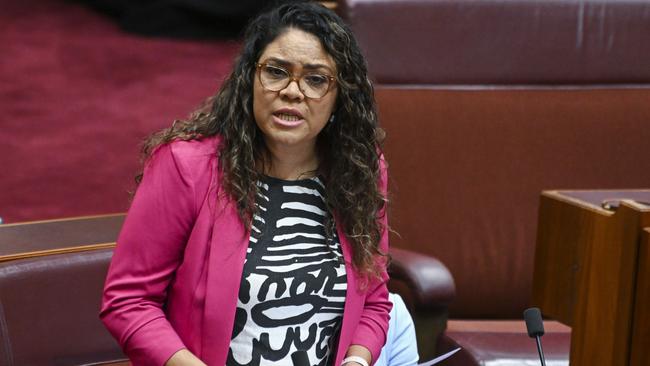
Yes, the leftist arguments often lack a rational approach, typically preferring emotive triggers, imbued with a sense of moral superiority. And yes, the bureaucracy, educational institutions, digital giants, corporate ESG activists and public broadcasters are more interested in marshalling public opinion than fostering open debate.
When it looks like a full-court press it raises voters’ suspicions. The self-righteousness and intolerance of the Yes campaigners also hardens the resolve of opponents, leading to an increasingly strident tone.
But none of this delegitimises the logic of the voice proposal.
Some attacks on the voice are little more than red herrings designed to generate fear. It is clearly and demonstrably wrong, for instance, to claim a voice would be a third chamber, would exercise a veto over government decisions or could free-range across all government decisions.
It is also wrong to claim this is a racial or racist measure – it proposes a representative body for Indigenous people not based on racial characteristics but on the simple reality that they are the descendants of the original inhabitants. Nor does it confer special privilege; it allocates only an opportunity to offer advice on matters affecting Indigenous people.
It does not insert race into the Constitution. Race has been in our founding document from day one, and the voice clauses do not mention race.
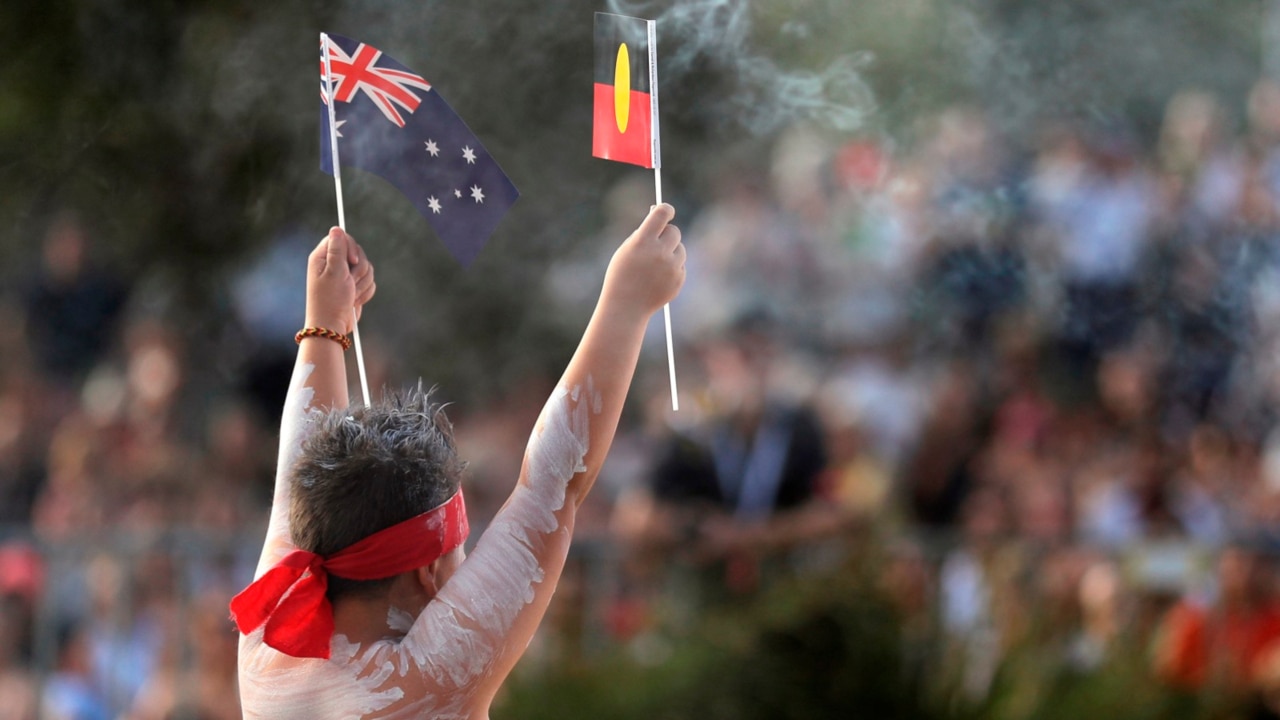
In 1967, when a referendum gave the federal government power to make laws for Indigenous people there was no official No case and more than 90 per cent of Australians voted Yes. It seems reasonable to assume that if we had thought at the time to also propose there should be a mechanism for Indigenous people to proffer advice on such laws, it would have been uncontroversial.
We will never know. What we do know is that opponents often ask “Why do we need it?” as if the voice is just a thought bubble or an instant fix for this problem or that. It is crucial to understand this is the culmination of decades of work and consultation around issues of discrimination, disadvantage, recognition and reconciliation.
A broad consensus of Indigenous people and leaders, as well as activists, lawyers and politicians from all parties and states, has arrived at the voice as a way to recognise Indigenous people in our Constitution that will be practically useful and deliver a meaningful step towards reconciliation. Indigenous rights and interests have been overlooked too often in the past, and a constitutionally enshrined voice is a mechanism to ensure they cannot be ignored or downtrodden in the future.
For all the scares and nitpicking, there two main arguments against this proposal: that it is not required because there is no innate value in the push for Indigenous constitutional inclusion and reconciliation or for Indigenous people to have input into policies directed at them; or that it is too risky to prescribe such a body in our Constitution because the unintended consequences could be deleterious to good governance and cohesion.
Much of the noisiest opposition seems to be deeply, although not overtly, rooted in the former argument. The more intellectually substantial opposition is centred on the thrust of the latter.
In my view the first argument carries little weight; reconciliation is a national project supported by most Australians, and past injustices coupled with current disadvantage demonstrate the need for progress.
The second case is important because meddling with the Constitution demands caution.
But we should take great comfort from the advice of two former chief justices of the High Court, Robert French and Murray Gleeson, their former colleague Kenneth Hayne, and a host of other lawyers and constitutional experts.
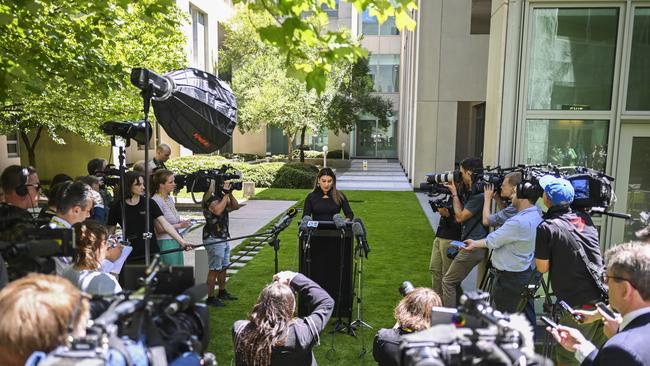
If refinements are proposed, let them come forward. Suggestions to formally limit the voice to advising parliament, rather than executive government too, have some merit – although, in practice, all governments and ministers would have an ear to the voice on certain issues.
It is a great pity that a project aimed at reconciliation and unity has become so divisive. Not all the blame can be sheeted home to opponents. The progressive left cannot seem to help themselves. Their overreach in other areas only increases paranoia about a voice.
There was the appointment of an Australian ambassador for First Nations people, surely a worrying blow against national unity; lukewarm defences of Australia Day; and then institutional deafness to warnings about alcohol bans and cashless deficit cards in Alice Springs, and elsewhere, demonstrating how ideology trumps practicality for green-left politicians.
The voice is a practical reform trying to progress through a stormy sea of ideological, symbolic and partisan posturing that weighs it down and makes it more susceptible to attacks. Mainstream Australians see Labor and the Greens as far too woke, including in Indigenous affairs, and the voice looms as an easy opportunity to draw the line.
The fact conservatives helped formulate the voice model and the previous Coalition government did extensive work on a model that satisfied all aspirations except constitutional enshrinement, does not seem to dissuade the partisanship in this debate. If it really cared for this reform, Labor would have eschewed partisanship, but they couldn’t help claiming ownership on election night; a damagingly audacious move given the idea by then had been advocated for at least eight years.
Proponents are right to argue that the detail of the voice legislation is not what matters for the referendum because the fine print of the voice will always remain within the remit of parliament. But realpolitik dictates the government must share enough detail to outline a model – you cannot ask voters to mandate a voice through the Constitution without providing a workable version of what it is you want mandated.
In the interests of helping with useful detail, as a former member of the Morrison government’s Indigenous voice co-design senior working group, let me try to answer some of the questions. There are queries in this debate that are genuinely pertinent, others are mischief-making, but proponents must deal with them all if they are serious about winning widespread public confidence.
Peter Dutton sent 15 questions to the Prime Minister. Let me go through them.
1: Who will be eligible to serve on the body?
A: Indigenous people who are of voting age, are chosen by their communities and pass probity checks.
2: What are the prerequisites for nomination?
Same.
3: Will the government clarify the definition of Aboriginality to determine who can serve on the body?
A: Unlikely, current working definitions work in a wide range of areas.
4: How will members be elected, chosen or appointed?
A: My view is the selection process might vary between local areas, but all will be chosen by their peers, either through a secret ballot election or, in more traditional communities, by consensus.
5: How many people will make up the body?
A: There would be many representatives at local and regional levels, but the national voice would have about 24 members, ensuring representation of all states and territories, Torres Strait Islanders, and remote communities.
6: How much will it cost taxpayers annually?
A: Surely some tens of millions of dollars, probably less than, for instance, the $117m or so spent on the Australian Sports Commission.
7: What are its functions and powers?
A: To provide advice to government on matters affecting Indigenous people and to manage its own affairs.
8: Is it purely advisory or will it have decision-making capabilities?
A: The Constitution will make clear it is advisory only – an aspect of its work that cannot be changed under legislation.
9: Who will oversee the body and ensure it is accountable?
A: Parliament and likely a specific parliamentary committee.
10: If needed, can the body be dissolved and reconstituted in extraordinary circumstances?
A: Parliament could do so ever as it pleases, so long as it maintains a voice of some kind.
11: How will the government ensure that the body includes those who still need to get a platform in Australian public life?
A: For the first time Indigenous people will choose their own representatives and will have the opportunity and responsibility that comes with that.
12: How will it interact with the Closing the Gap process?
A: In my view it should take over responsibility for Closing the Gap from the Coalition of Peaks; in fact, I think the voice should presage the abolition of a number of other bodies, but this is a debate Indigenous groups are avoiding until after the referendum to avoid turf wars.
13: Will the government rule out using the voice to negotiate any national treaty?
A: I would hope not. If there was any move to negotiate any kind of treaty or other agreement with Indigenous groups or communities, I would have thought the voice would be the ideal vehicle to offer advice.
14: Will the government commit to local and regional voices as recommended in the co-design process?
A: I think they should, but it is complicated by states now legislating their own voices. Because the federal government has been so slow, they will have to retrofit ways to enmesh with, rather than duplicate, the local and state voices in South Australia and Victoria.
15: If not, how will it effectively address the real issues that impact people’s lives daily on the ground in the community?
A: Absolutely, to deliver meaningful change, the national voice must spring from grassroots voices to ensure real and practical advice emerges from diverse Indigenous communities around the country.
Let me also address the most prominent reasons to oppose the voice as cited by Newspoll this week.
Disbelief it will fix the issues confronting Indigenous communities: it is not a magic bullet, but whatever we are doing now is not working and few can argue that any workable change can occur without direct input from Indigenous people. It would favour one group over another and would divide society: our Constitution has always included race, and generally in an exclusionary form, but this has the opposite intent. It aims to give Indigenous people a chance to have a say about special policies the parliament directs at them; there is no special advantage or right, just a fair go to overcome disadvantage, so the aim is not to divide but to bring us all together, to close the gap.
Others said they wanted more detail – I hope I have already tackled that – and also argued that it was not needed: well no, we do not need this, we could muddle on as we are, and reject the Indigenous push for constitutional recognition through a practical voice – but how would this advance reconciliation, what goodwill would it foster, and what practical solutions to overcome the disadvantage of Aboriginal kids would this produce?
We know from myriad polls that the overwhelming majority of Australians support reconciliation, closing the gap and constitutional recognition. After decades of work, a broad consensus of Indigenous Australia, and many others, has coalesced around the voice to deliver that constitutional change in a way that should bring permanent, practical benefits.
It really is a modest request. We would want to stop and think very long and hard as a nation, and consider the consequences, before we were to reject it.


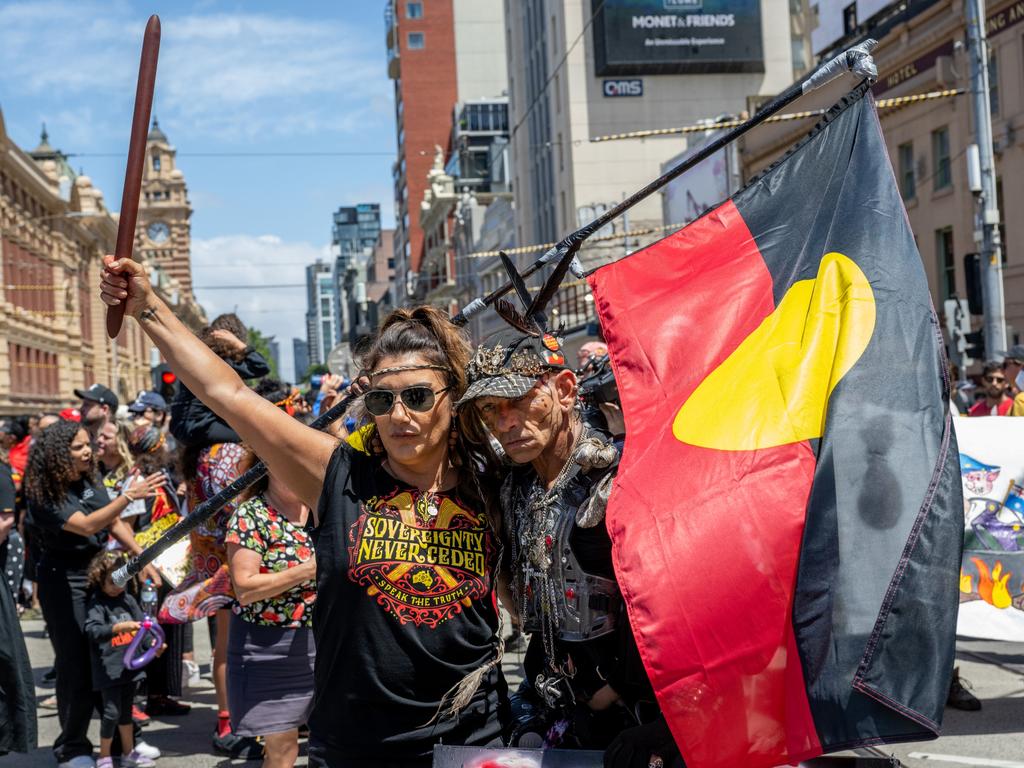
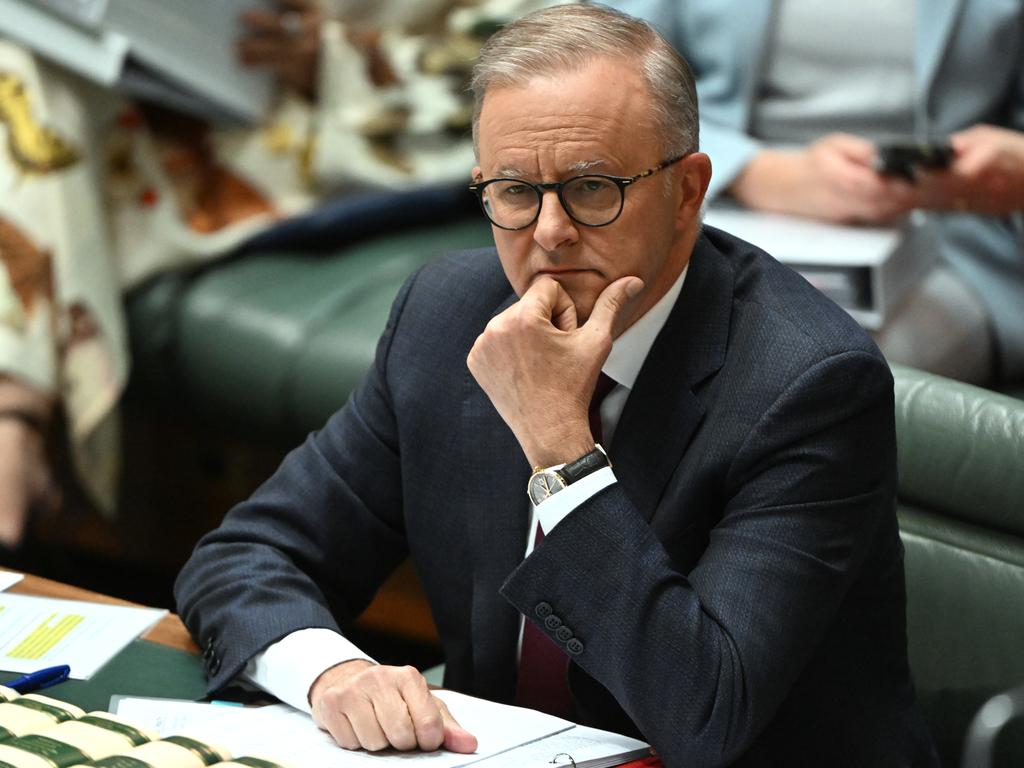
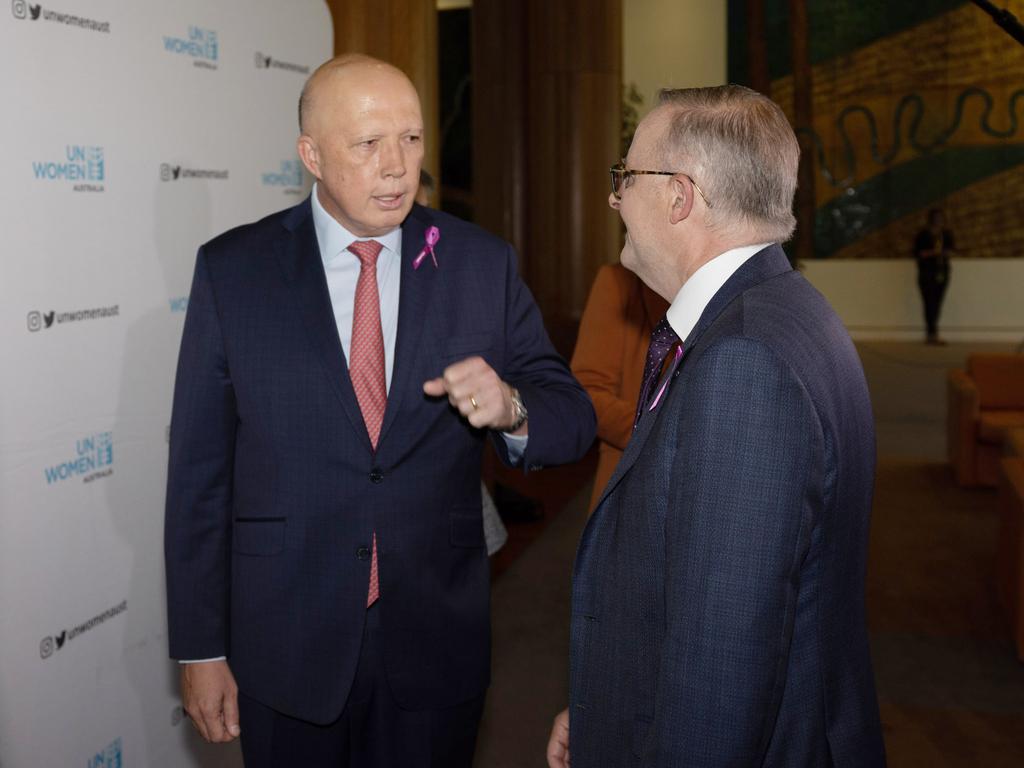


Yes, Anthony Albanese injected an unwise element of partisanship into the Indigenous voice cause on the night he won the election. Yes, Labor has failed to do the hard yards of informed advocacy around a preferred model or by addressing reasonable concerns.